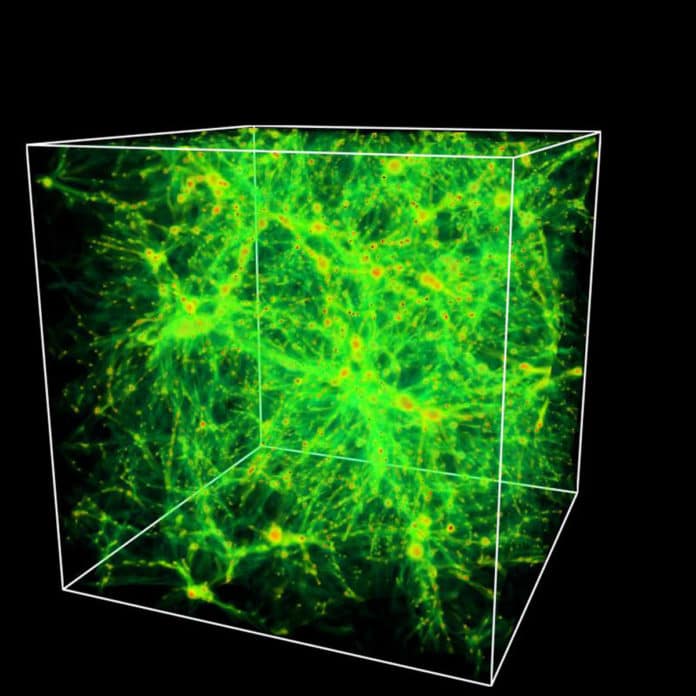A team of astronomers led by Yale University recently took a grander at the cosmic fog for the better comprehension of the most ordinary matter in the universe and the extraordinary things that happen to it.
They reported about the new cosmological zoom-in simulation, through which the zoom region consists of two halos with virial mass and an approximate megaparsec long cosmic filament connecting them.
They learned charming new insights concerning the elements of baryons, the accumulation of subatomic particles (counting protons and neutrons) that records for a significant part of the visible matter known to mankind. Most baryons dwell in the intergalactic medium (IGM), which is the space in space in-between galaxies where a matter is neither bound to nor pulled upon by encompassing systems.
Astronomers report on the most detailed simulation ever of a large patch of the IGM. For the first time, they were able to see how cold, dense gas clouds in the IGM organize themselves and react within much larger ‘sheets’ or ‘pancakes’ of matter in the vastness of space.
Analysts have tried for years to sort out the structures and properties of the IGM — to some extent to test the standard model of Big Bang cosmology, which predicts that 80%-90% of baryons are in the IGM, yet in addition to explore the IGM’s significant job as the universe’s fuel source.
Yale postdoctoral associate Nir Mandelker said, “The reason galaxies are able to form stars continuously is that fresh gas flows into galaxies from the IGM. It is clear that galaxies would run out of gas in very short order if they didn’t accrete fresh gas from the IGM.”
With its new simulation, the Yale team learned quite a lot — including new properties of those aforementioned sheets of baryons.
Professor Frank C. van den Bosch said, “These are flattened distributions of matter, known as ‘pancakes,’ that extend across many millions of light-years across. We found that rather than being smoothly distributed, the gas in these pancakes shatters into what resembles a ‘cosmic fog’ made up of tiny, discrete clouds of relatively cold and dense gas.”
Such dense clouds of gas had been thought to form just in regions of the room near systems, where the gas is normally denser. In any case, the new reproduction demonstrates that they additionally can consolidate out of the low-density IGM.
Scientists noted that the phenomenon happens normally, as the aftereffect of an instability activated by the effective cooling of the gas.
According to simulation, the cosmic fog is pristine as it is too far from any galaxy to be polluted with metals.
Mandelker said, “Our work highlights the importance of properly resolving the properties of the gas in the IGM, which is often neglected in favour of better resolving the central galaxies. It has been very difficult to understand how the gas in the IGM could possibly become so dense and optically thick, especially when previous generations of cosmological simulations did not reveal any such dense gas in the IGM.”
The findings appear in the Astrophysical Journal Letters.

